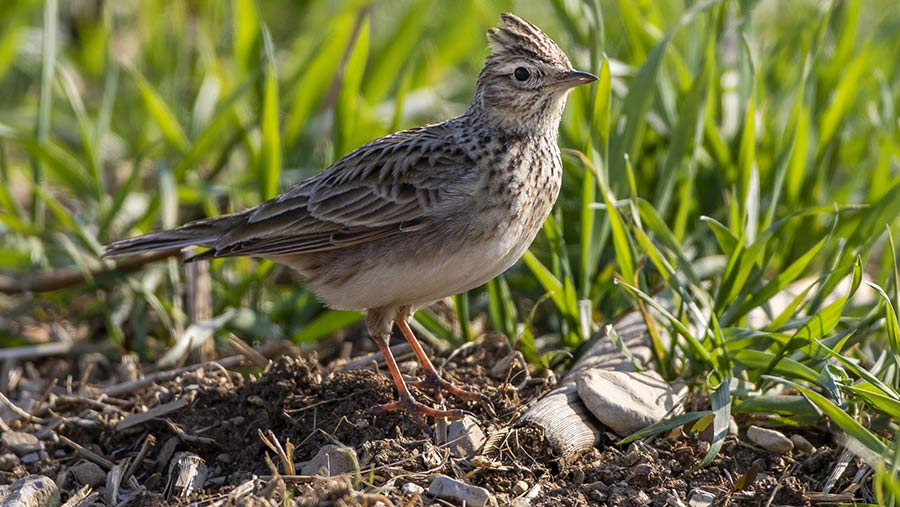SFI trials show ditching plough improves bird numbers
 © Rolf Muller/Adobe Stock
© Rolf Muller/Adobe Stock Fields established using conservation agriculture systems have higher bird numbers than those cultivated using a more conventional plough-based approach, according to research.
Researchers believe this is due to improved soil health and biodiversity with conservation agriculture techniques.
The results of more than three years of successive monitoring on farms show up to 1,000% higher bird numbers.
See also: Plough, min-till and no-till compared: year one
The independently monitored research is part of the Syngenta Conservation Agriculture and Sustainable Farming Initiative.
It is studying the field-scale agronomic, economic and environmental implications of conservation agriculture establishment systems – on contrasting light land at East Lenham, in Kent, and the heavy soils of Loddington in Leicestershire.
At Loddington, on the Game and Wildlife Conservation Trust (GWCT) Allerton Project farm, areas established with conservation agriculture techniques recorded an average 1,011% more birds over the winter.
This was compared with crops established with conventional plough-based tillage.
At East Lenham, the average numbers of birds recorded on the ground over the past three winters was 145% higher in fields established by direct drill/light till.
Bird numbers were monitored once a month on the different establishment system throughout the winter.
More food
Bird numbers are likely to be attracted to more favourable winter-feeding resources associated with min-till or direct-drill crop establishment systems, where food remains on or close to the surface, says Syngenta sustainable farming manager Belinda Bailey.
“Higher bird activity is a very positive indicator of biodiversity in fields under conservation agriculture.”
GWCT ecologist John Szczur, who is responsible for the project’s bird monitoring in Kent, reported that numbers of all the insect and seed feeding bird species recorded were higher on the conservation agriculture plots at East Lenham last winter.
That included more than two and a half times as many skylarks and double the number of meadow pipits as on conventionally established plots.
Snipe, grey partridge and red-legged partridge were only recorded on the direct-drill areas or cover crops in the conservation agriculture system.
In previous years, GWCT monitoring has seen up to 55 skylarks on conservation agriculture established plots at Loddington, compared with just four on the conventionally established areas.
Worm monitoring
The Syngenta conservation agriculture research has also looked at earthworm numbers under different establishment systems, monitored by GWCT.
Results have seen consistently higher numbers of earthworms – an important source of food for some bird species – under both direct-drill and min-till establishment, compared with conventional tillage.
Earthworm numbers have responded most positively on the light soils in Kent, with an average 75% more with direct-drill over conventional tillage, but from a relatively smaller base.
At Loddington, where earthworm numbers were typically 10 times greater in the heavier soils, the increase from conservation agriculture was 8%.
Endogeic earthworms that typically live below the top surface have fared particularly well under a min-till establishment system at Loddington, says Mrs Bailey.
“That could be because the system incorporates organic matter into the surface layers that makes it more accessible as food, without disturbing the worm’s habitat.”
Mrs Bailey pointed out that both farms involved with the project also have extensive ecological areas and field margins positively managed to provide environmental resources.

